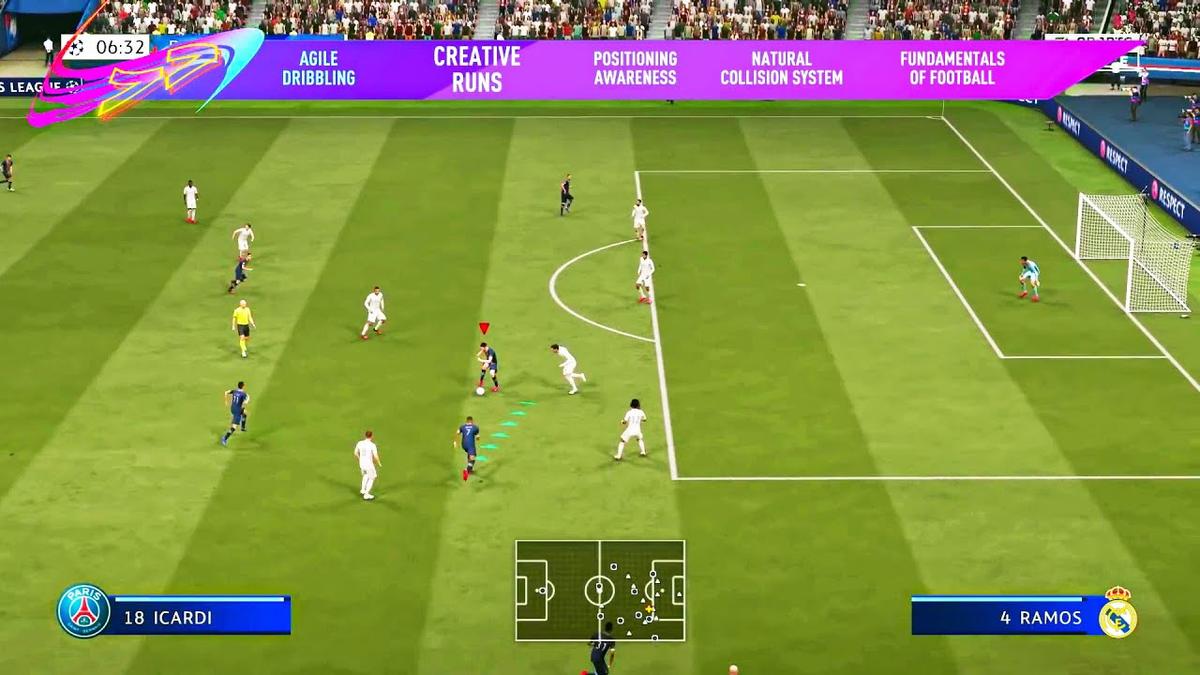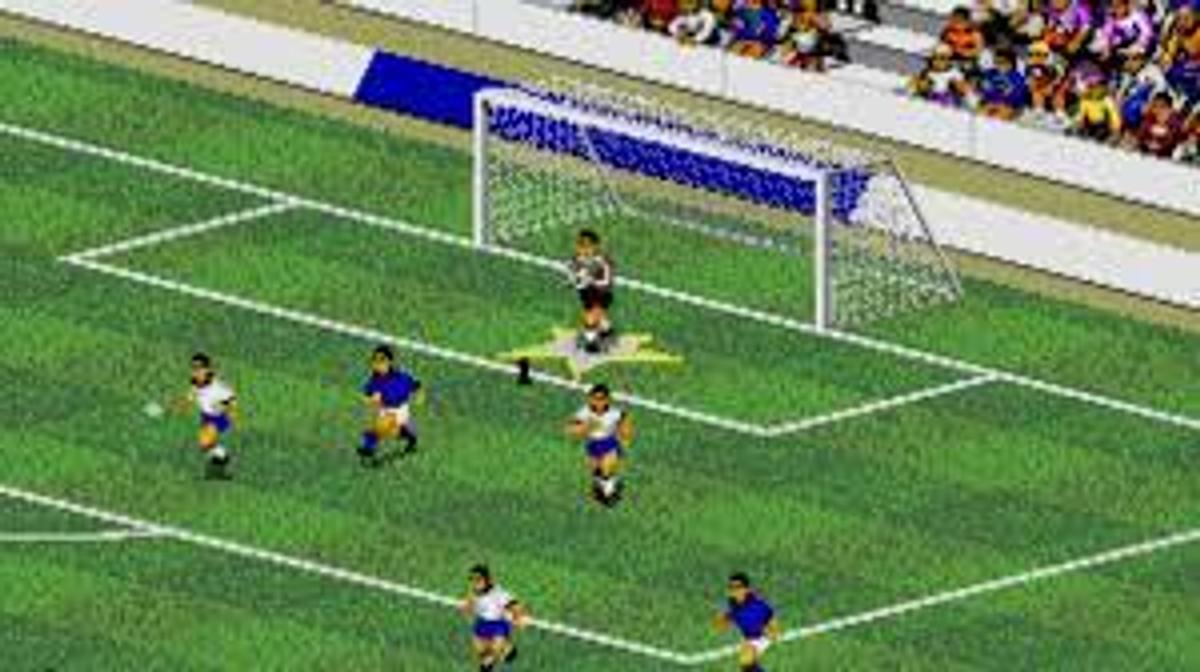How EA Sports’ popular FIFA series is changing football
Josip Loncaric

How EA Sports’ popular FIFA series is changing football
Josip Loncaric
If you are under the age of 45, chances are you have played or at least heard of the video game phenomenon known as FIFA. What began as just another football game in late-1993 has become an annual bestseller, with producing company Electronic Arts selling more than 260 million copies worldwide. It has undoubtedly played a massive part in the globalisation of the world game, and exposed football to young audiences in countries where it’s not the most popular sport.


The product is slick, with real teams and real player names and lifelike graphics that look – with each edition – closer to the real thing. Picking up a controller and being competitive in each annual release won’t take you very long, however mastering the game will take countless hours, days, weeks and months. Within a year, a new version will be released that requires you to start this process all over again. This is the hook of sports-based video games that are released annually. In FIFA, the Ultimate Team mode is the major drawcard, with more than 20 million people playing worldwide.
The downside to all of this is that the FIFA franchise is having a questionable effect on player development from the earliest age groups, right through to senior football. Traditionally, football is not a high scoring game like rugby league, basketball or Australian Rules Football (AFL), yet the FIFA game mechanics create a version of football that is highly favoured for the attacking team. This means it is easier to break down a team and create scoring chances than it is to defend. Action is high, the game is constantly end-to-end and goals tend to come easier than what statistics show us is the reality for the top five football leagues (EPL, La Liga, Serie A, Bundesliga and Ligue 1) in the world. Goal scoring attempts in these leagues average about 12 per match and a goal is scored once every 69 minutes. In short, although FIFA looks like a simulation of the real game, it plays more like a highlights package of the 90-minute real life version of football.
As a coach of youth football, I find coaching the defensive principles that make the world game so unique is becoming more challenging with each generation of players. All too often I see players diving in to try and win the ball back on their own without assessing whether or not there is adequate support from teammates that will increase the chance of winning the ball. Recently, I conducted a poll with our KDC Soccer School students asking the question; ‘When the opposition has the ball, what is our main objective?’. Elaborate responses like press collectively, pressure in the opponent’s half, play zonal or man-on-man and create 2v1’s in our favour were common answers to what is a simple question with only one answer; that is stop the opponent from scoring. That is the key. When you have the ball, generally you will be looking to build up and score. When your opponent is in possession, your main objective is to not allow them to score. Whether that uses high pressing, a deep defensive block or any other variable strategy, the objective remains the same.
The dynamics of the FIFA series has an ever-increasing emphasis on individual brilliance and using lightning-fast running speed as the main means for breaking a team down and creating chances to score. Dribbling moves are often overused in the game, to the point where the FIFA version of football tends to resemble the 1v1 elements of NBA basketball more than the collective team work of football. This goes against the famous words of football visionary Johan Cruyff who suggested that 'it is what a player does without the ball that determines whether or not they are a good player.' His view was formed after observing that, on average, a player has the ball in his or her possession for less than three minutes in a 90-minute game.
This goes against the FIFA video game model, which gives full authority to the person holding the controller to move and make decisions for every player in possession of the ball. It is completely counterintuitive to how a real 11v11 game plays out on the pitch. Movement off the ball, support, communication and team work is vital to the success of a team and a player within a team. Each player has a role to play and not every action will result in a glorious goal.
There may well be a case to argue that regular binge sessions of playing FIFA can in fact make it harder for youth coaches to teach scanning, spatial awareness and the various aspects that support teamwork. In real football, the likes of Leo Messi and Cristiano Ronaldo are not able to perform without the help and support of their team mates. In the video game version, there is an over emphasis on these types of players to do it all on their own.
Coaches and indeed parents are not exempt from the lure of the FIFA distortion of football. It is common to hear youth coaches in the National Premier Leagues and community competitions trying to control their players and their decision making, just like they control their lifelike characters on their Playstation or Xbox. This also seems to be having an adverse effect on decision making and individual problem solving that is so crucial in a game like football that has the least influence from a coach on the sidelines at senior level. In contrast, coaches at the elite level are increasingly operating as facilitators rather than dictators, and player-led training and playing is proving to be successful in both the development and performance phases.
A recent study by the Australian Professional Footballers Association on the determining factors of success for the famous ‘Golden Generation’ of Socceroos anecdotally suggests that elite players demonstrated self-regulation and had a strong intrinsic focus to reach the highest level possible. FIFA video games and gaming consoles when Mark Viduka or Marco Bresciano were growing were nowhere near as popular or realistic as the current version of the game.


If we want to create effective decision makers that can solve problems on the pitch, perhaps we need to take a step back from the totalitarian control of the FIFA franchise. It provides us with the chance to lead by example and help young players understand the difference between the video game version of football and the real thing. Our sport is not NBA basketball, where the average scoring shots per game is 123. We are not the NFL, where there is an average of one score or goal equivalent happening every nine minutes. Perhaps these sports are better suited to the ever-changing video game world, where instant rewards and higher scores are the norm, not a rare occurrence. At the highest level, football averages a goal once every 69 minutes, which is why we revere goal scorers so much and creative players are the difference makers in the best teams in the world. We need to remind our children - the future of our game – that there are many facets to football that the FIFA series has not yet been able to recreate to match the impressive visuals and official licenses.